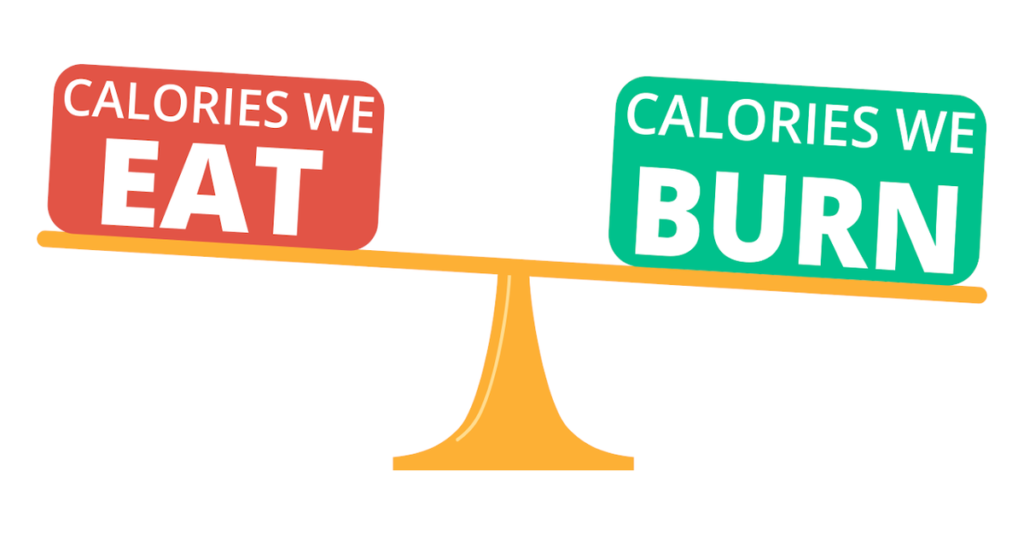NUCLEUS OVERLOAD
If you’re someone who’s been working out for a while, you might have heard of the concept of nucleus overload. This technique involves using high reps and low weight to target the muscle nuclei and stimulate muscle growth. While the exact science behind how it works is not necessary to understand, the practical application of the technique is what matters. In this article, we will provide a practical guide on how to apply nucleus overload to each muscle group and some key points to keep in mind while using it. While the correct grammatical term is nuclei, we will continue to use the term nucleus since it is more commonly referred to in this context.
What is Nucleus Overload?
In the realm of muscle-building programs, hypertrophy has been the primary focus, while hyperplasia has been largely disregarded. It was previously believed that once an individual reaches adulthood, their muscle cell count is set and cannot be increased. However, recent studies have shown that hyperplasia is possible and one training method that targets it is nucleus overload.
Nucleus overload is a training method for muscle growth that works by targeting the muscle nuclei to stimulate muscle cell multiplication. It involves subjecting the muscle to cycles of stress without necessarily breaking down the muscle fibers. By focusing on the nuclei of the muscle cells, this method stimulates muscle growth and multiplies the cells, resulting in increased muscle mass.
Nucleus overload uses high reps and low weights to target the muscle nuclei, stimulating muscle growth. By performing high-rep sets with light weights, you can stress the muscle without reaching muscle failure. However, the exact science behind how this method works is not fully understood, and its practical application is crucial.
Properly executed nucleus overload training has been demonstrated in a study to promote rapid muscle growth and regeneration, while also resulting in muscles that are just as strong as those built through regular training when recommended rest periods are included.
It’s important to note that nucleus overload should not replace traditional muscle-building techniques like heavy lifting and progressive overload. Instead, it should be used as a supplement to these techniques to target specific muscle groups that need to catch up in size. For instance, you can use nucleus overload to stimulate hyperplasia in muscle groups like your lats or calves that are lagging behind the rest of your body.
To succeed with nucleus overload, proper programming and application of the technique are essential.
Even though nucleus overload is an efficient muscle-building technique that doesn’t require heavy weights or expensive equipment, it does require a lot of volume and frequency, which can be time-consuming. To maximize its time effectiveness, it’s possible to be programmed as a part of a superset, along with an exercise that targets a different body part, in order to not reduce performance from your main workout.
To make the best use of nucleus overload, it’s recommended to focus on small muscle groups, which have a lower work capacity and faster recovery than larger muscle groups. Big muscles are often targeted with compound exercises, which accumulate a lot of fatigue by default and are not optimal for running nucleus overload cycles.
While strength training emphasizes intensity, nucleus overload is all about volume and frequency. This method involves putting the muscle through cycles of stress that may not necessarily break down muscle fibers, but instead, aims to increase the size and number of muscle cell nuclei, leading to greater protein synthesis and ultimately more muscle growth.
Nucleus overload can be done for any muscle group, but it should not interfere with heavy compound movements. It’s important to use different parameters for different goals and not to overdo it to the point of interfering with hard sets or causing injury. Nucleus overload can cause muscle fatigue, but when done properly, it’s non-invasive and doesn’t damage tendons.
However, it’s important to note that nucleus overload should not be a priority over hard sets. The goal is to “tickle” the muscle rather than fatigue it, and it should always be done in conjunction with other training methods.
One of the benefits of nucleus overload is that it is cost-efficient but not time-efficient. This means that it can be a useful addition to a training program when time or resources are limited.
How To Program Nucleus Overload
Proper programming and application of the technique are important to ensure success with nucleus overload. It should not be viewed as a replacement for hard sets, but rather as a complement to them. Nucleus overload is focused on hypertrophy through volume and frequency, rather than intensity.
To apply nucleus overload to each muscle group, it’s important to consider factors such as work capacity, baseline, and recovery time. Low work capacity or low work entrance muscles are easier to manage during recovery, making them good candidates for nucleus overload.
To achieve the best results with nucleus overload, only one isolation movement per muscle group and a maximum of two nucleus overload movements should be used, specifically related to each other. The goal is to increase volume and intensity, with volume being the priority for manipulation. Progression should be achieved by adding reps and sets, rather than weight on the bar.
It is important to note that nucleus overload should not be the main focus of the program, but rather a small portion of it. Baseline and repeatability of sets should be monitored to ensure effectiveness and prevent muscle damage. Nucleus overload should be scheduled on non-hard set days and not allowed to take over the entire program.
While compound movements can cause excessive fatigue, they are essential for overall strength and muscle development, especially in larger muscle groups. Nucleus overload, on the other hand, is a useful tool for enhancing the growth of small muscle groups with less work capacity and faster recovery.
Main Takeaway: Proper programming and application are essential to ensure success with nucleus overload, and it should not be the main focus of a training program but rather a small part of it.
While it can be a useful tool for enhancing muscle growth, it should not be prioritized over hard sets or compound movements.
Nucleus overload can be used intelligently and strategically to bridge volume gaps and work on neglected muscle groups, but it should not be viewed as a substitute for hard work or a break from training.
How To Incorporate Nucleus Overload Training Into Your Program
It is not recommended to do nucleus overload on the same day that you already work the targeted muscle group with heavy compound exercises. For example, if you have a nucleus overload cycle for the lats and you have already done heavy chin-ups, it is not necessary to do more work for the lats on that day as you may risk overtraining and hindering your recovery.
Nucleus overload should be incorporated on days where the targeted muscle group is not being worked, usually as a complementary and supplementary exercise to compound lifts. The purpose of nucleus overload is to provide an opportunity to bridge volume gaps and work on neglected muscle groups, not to replace or interfere with hard work on compound lifts.
To incorporate nucleus overload training into your program, you should first select a muscle group to target. Once you have chosen your target muscle, you need to identify an isolation movement that effectively targets that muscle. For instance, if you want to work on your triceps, triceps extensions are a great exercise for isolating that muscle.
The next step is to find days in your current program where your target muscle group is not being worked. Then, you should find a suitable place on these days to incorporate a superset with the chosen exercise. If your NO focuses on the lats for example, you can perform your lat pullovers as a superset to your squats or any other leg day accessory.
After identifying the superset, you need to determine the number of sets of nucleus overload that you need to perform. Once you have decided on the number of sets, you should choose a number of reps that allow for low intensity, high repeatability away from failure. This is usually around 15-20 reps, with the total amount of reps per session being between 45-100. Then, select a weight that allows you to perform the desired number of reps on the specific exercise.
A typical weight selection would be around 40-50% of what you’d normally use for your main working sets. Before adding weight, see how high you can go in reps before losing time efficiency. This will help you determine your rep range for future workouts.
If necessary, check to see if there is another space for an additional nucleus overload superset on that day. Once you hit your volume cap on that day, find space on another day where similar sets can be done. Finally, repeat these steps in your training program to continually increase the volume and intensity of your training.
Main Takeaway: You should select a muscle group, identify an isolation movement that effectively targets that muscle, and then incorporate a superset with the chosen exercise on suitable days in your program. Finally, determine the number of sets of nucleus overload needed, select an appropriate weight and rep range, and repeat the process to continually increase the volume and intensity of your training.
How To Apply Nucleus Overload
As previously mentioned, Nucleus overload is a technique that can be utilized for any muscle group that requires additional size. However, it is crucial to program and apply this technique correctly to achieve optimal results. Below are some practical recommendations for implementing nucleus overload for each muscle group:
Smaller muscle groups:
- Forearms: grippers, rollers and dead hangs (once or twice a week, staying away from failure)
- Traps: dumbbell or barbell shrugs, either done by themselves or immediatelly after RDLs, rack pulls and lunges (3-4 sets of 12-15 reps, 3 times a week)
- Triceps: cable or band extensions behind the head or other extension variations targeting the long, medial, and lateral head, band pushdowns
- Shoulders: isolation exercises such as lateral raises, rear delt raises, skiers or band facepulls
- Abs: crunches, leg raises, and other isolation exercises (a few sets every day)
- Neck: curls (avoiding fatigue)
- Calves: seated and standing calf raises
Larger muscle groups:
- Quads: leg extensions and possibly sissy squats
- Hamstrings: leg curls (no hip hinges)
- Glutes: hip thrusts (if desired)
- Chest: band flies (staying away from failure and avoiding shoulder joint or triceps involvement)
- Upper back: lat pullovers and pull-ups
Additional Key Points
Here are some other essential considerations to bear in mind when employing nucleus overload:
- Muscles with low work capacity or those that are less involved in compound movements are easier to recover from.
- Nucleus overload should not be used as a substitute for hard sets, but rather as a supplement to them.
- Nucleus overload is a form of fatigue that is targeted at small muscle groups by means of isolation exercises.
- It is not advisable to program nucleus overload with the expectation that it will have an impact on strength gains or compound movements.
- The primary goal of nucleus overload is to stimulate hypertrophy via increased volume.
Summary
Nucleus overload is a muscle-building technique that targets the muscle nucleus for growth.
It is not recommended for beginners and should only be used by late novices, early intermediates, and advanced bodybuilders.
Focus on hard sets and relevant intensity windows to ensure proper muscle stimulation.
Autoregulation and understanding your body is crucial for success with nucleus overload.
Do not let nucleus overload turn into straight sets, as it is not designed for strength progression.
Nucleus overload should be considered an addition to your existing workout program.
Choose isolation exercises for the muscle group you want to target and perform them on days where the muscle does not receive any work.
Start with one cycle of nucleus overload to allow it to prove itself, and do not do multiple cycles at once.
A typical weight selection would be around 40-50% of what you’d normally use for your main working sets, with the total amount of reps per session being between 45-100.
Nucleus overload can be mentally boring but is effective for muscle growth.
It takes years to see significant results with nucleus overload.
Understanding your body and its response to nucleus overload can optimize muscle growth and fat loss.







